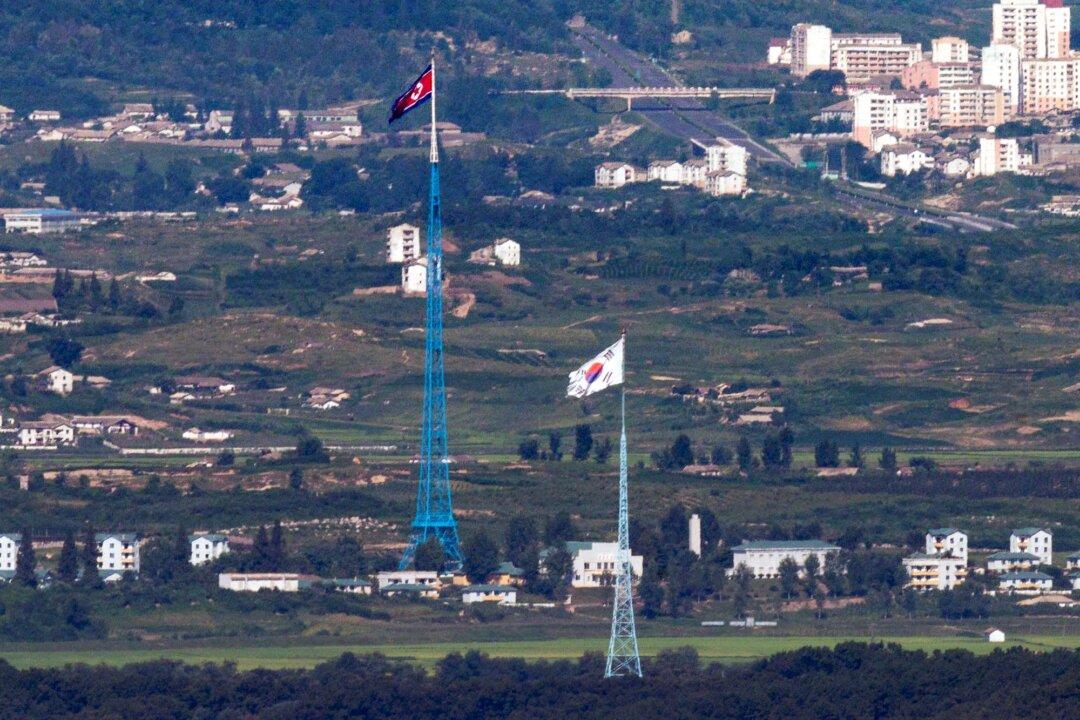SEOUL, South Korea—South Korea said Monday it plans to launch its first domestically built spy satellite at the end of this month to better monitor rival North Korea, as the North pushes to expand its arsenal of nuclear weapons targeting its adversaries.
The plan was unveiled days after North Korea failed to follow through on its vow to make a third attempt to launch its own reconnaissance satellite in October, likely because of technical issues.
Jeon Ha Gyu, a spokesperson for the South Korean Defense Ministry, told reporters Monday that the country’s first military spy satellite will be launched from California’s Vandenberg Air Force Base on Nov. 30.
The satellite will be carried by SpaceX’s Falcon 9 rocket. Under a contract with SpaceX, South Korea plans to launch four more spy satellites by 2025, according to South Korea’s Defense Acquisition Program Administration.
South Korea currently has no military reconnaissance satellites of its own and relies on United States spy satellites to monitor moves by North Korea.
The possession of its own spy satellites would give South Korea an independent space-based surveillance system to monitor North Korea in almost near-time. When operated together with South Korea’s so-called three-axis system—preemptive strike, missile defense and retaliatory assets—the country’s overall defense against North Korea would be sharply strengthened, according to Lee Choon Geun, an honorary research fellow at South Korea’s Science and Technology Policy Institute.
Lee said that United States spy satellites produce much higher-resolution imagery but they are operated under United States strategic objectives, not South Korea’s. He said the United States also sometimes doesn’t share satellite photos with highly sensitive information with South Korea.
Last year, South Korea used a homegrown rocket to place what it called a “performance observation satellite” in orbit, becoming the world’s 10th nation to successfully launch a satellite with its own technology.
But Lee said it’s much more economical to use a SpaceX rocket to fire a spy satellite from the Vandenberg base. Other observers say a SpaceX rocket would be more reliable to carry the South Korean spy satellite, which is heavier than the satellite launched in 2022.
North Korea is also eager to acquire its own spy satellite. But its two launch attempts earlier this year ended in failure for technical reasons. The country said it would make a third attempt sometime in October, but it did not do so and its state media has not provided a reason.
South Korea’s spy agency told lawmakers last week that North Korea is likely receiving Russian technological assistance on a spy satellite launch program. The National Intelligence Service said North Korea was in the final phase of preparations for its third launch, which the NIS said would likely be successful.
South Korea, the United States, and other foreign governments believe North Korea is seeking sophisticated weapons technologies from Russia to modernize its nucler and other weapons programs in return for supplying ammunition, rockets, and other military equipment to support Russia’s war in Ukraine.
The possession of spy satellites is part of ambitious arms build-up plans announced by leader Kim Jong Un in 2021. Kim said North Korea also needs more mobile intercontinental ballistic missiles, nuclear-powered submarines, hypersonic weapons, and multi-warhead missiles to cope with intensifying United States military threats.







